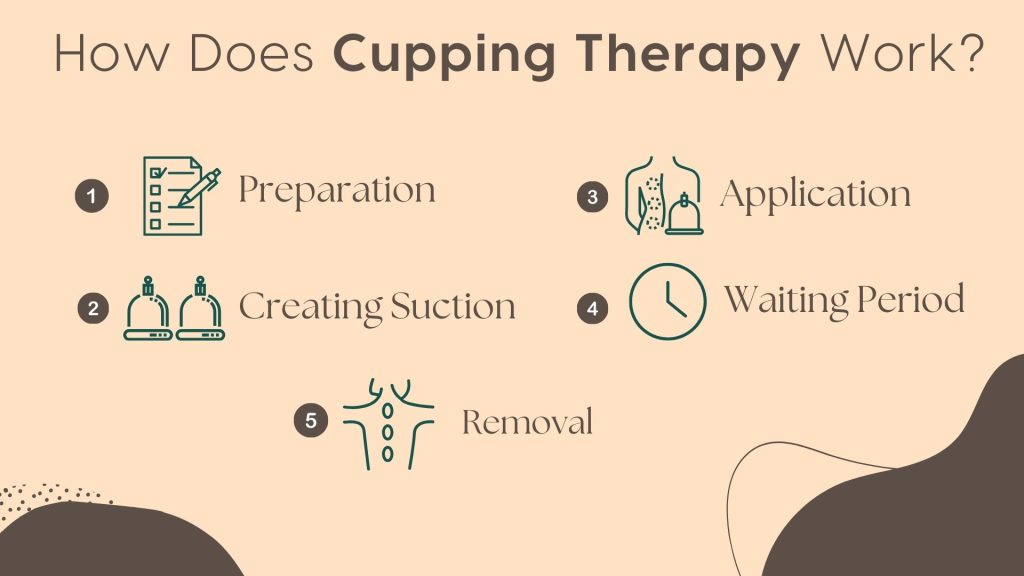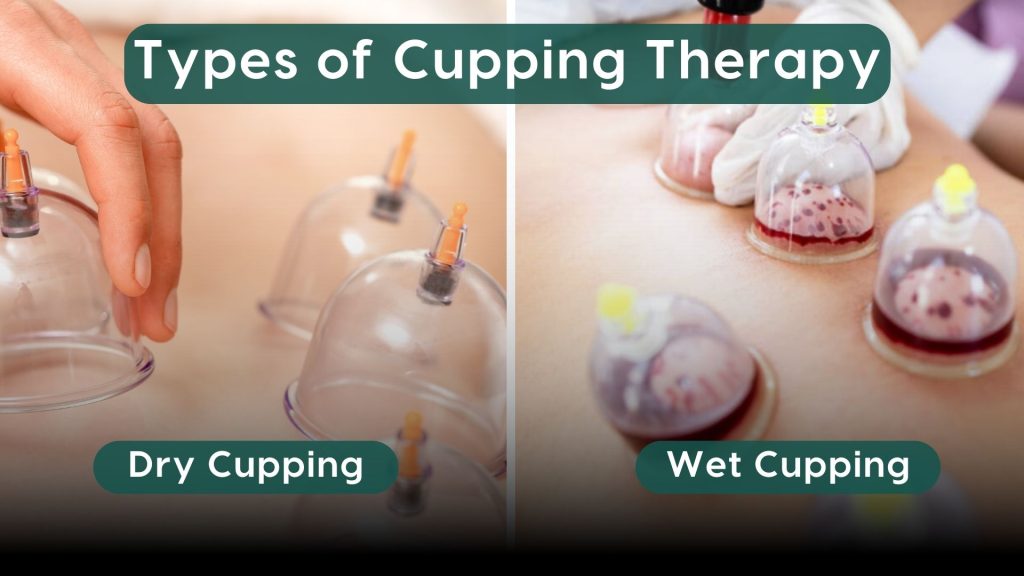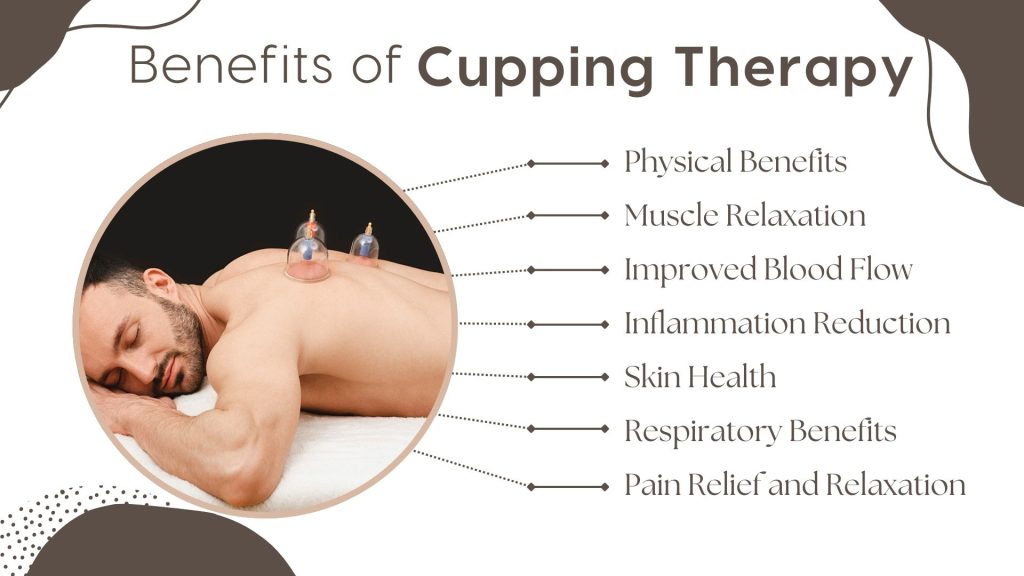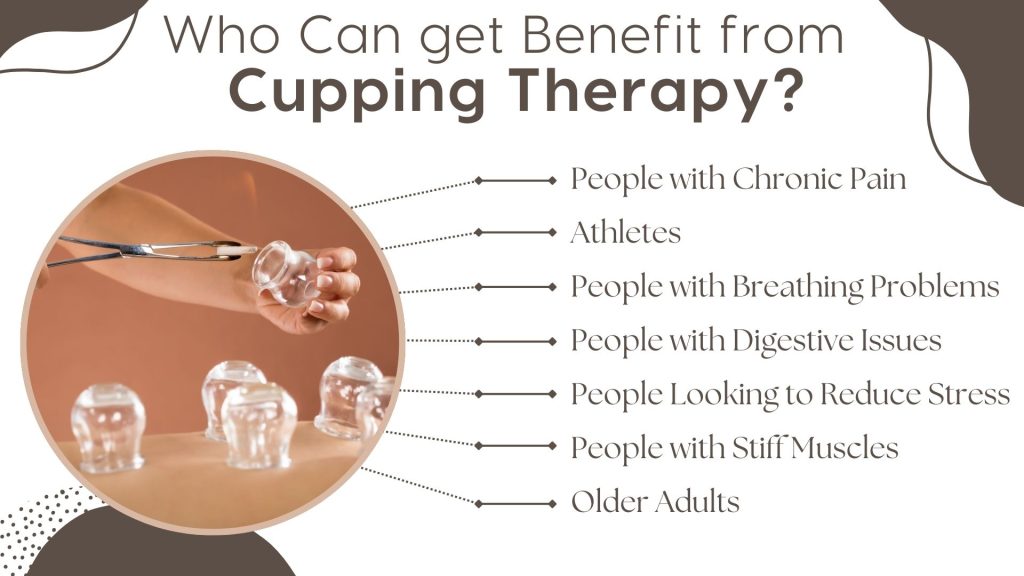Have you ever noticed the round marks on an athlete’s back and wondered what they are? Those distinct marks are a result of cupping therapy, an ancient practice that has gained popularity for its role in pain relief, stress reduction, and overall well-being. But what exactly is cupping therapy, and how does it work?
Cupping therapy is a traditional practice that involves placing suction cups on the skin to promote healing by increasing blood circulation and helping to reduce muscle tension. It’s a technique that has been used for centuries and has recently made a resurgence, especially among elite athletes and wellness enthusiasts seeking natural recovery methods.
Cupping therapy is an old type of therapy where special cups are put on your skin to create suction. This suction helps improve blood flow, reduce muscle tightness, and support healing. The therapy meaning is basically any treatment that helps heal or reduce pain in the body. Cupping therapy is a kind of therapeutic treatment, similar to hijama therapy or things you might find in a massage center.
The process is pretty simple: Cups made of glass, bamboo, or even disposable glass are put on the skin. These cups can be heated to make a vacuum or applied using a suction machine to create the same effect. The suction pulls the skin up slightly, which improves blood flow in that area and helps it heal. This therapeutic meaning is similar to a deep tissue massage, but instead of pressure, it uses suction.
Scientifically, cupping therapy works by improving blood flow in the area where the cups are placed. This can help relax muscles and promote healing in the cells. It also helps the lymphatic system, which reduces swelling and helps the body get rid of toxins. Some studies show that cupping therapy can help loosen tight tissues under the skin, which is called myofascial release. In traditional Chinese medicine, cupping therapy is used to balance the body’s energy, also known as qi, and it is an important part of traditional healing practices.
In some cultures, hijama (a type of cupping therapy that uses small cuts to draw out blood) is popular because people believe it can help with many health issues. Whether using 7 cups or fewer, the goal is to help the body heal naturally by improving blood flow. Learning about the apparatus meaning like the cups and the suction devices used in cupping therapy can help make it easier to understand for those who are new to it.
How Does Cupping Therapy Work?
Cupping therapy is a simple process where cups are placed on the skin to help improve blood flow and promote healing. Here’s how it works, step-by-step:

Procedure:
- Preparation: The practitioner picks the right cup sizes and cleans them. They clean the patient’s skin, and sometimes put a little oil or balm to help the cups move more smoothly and create better suction. The therapist decides how many cups to use and where to place them.
- Creating Suction:
- Fire Cupping: The therapist lights a cotton ball soaked in alcohol and briefly puts it inside the cup to heat the air. After removing the flame, they quickly place the cup on the skin. When the air inside cools, it creates a vacuum that pulls the skin up into the cup.
- Mechanical Suction: In modern methods, a pump is used to suck the air out of the cup once it’s on the skin, so there’s no need for fire.
- Application: The cups are placed on specific areas, usually where there is pain or tightness. The cups stay on the skin for several minutes, causing the skin to rise inside the cup and increasing blood flow.
- Waiting Period: The cups stay on the skin for about 5 to 20 minutes. During this time, the skin under the cups may turn red or purple, which shows that blood flow is increasing.
- Removal: When the time is up, the therapist removes the suction by lifting the edge of the cup or pressing the skin next to the cup so air can get in, making it easy to take off. After removing the cups, the therapist may massage or clean the area to help relax the muscles.
Types of Cupping Therapy
There are different kinds of cupping, but the two most common are dry cupping and wet cupping (also called hijama cupping).

- Dry Cupping: This is the basic kind where suction cups are put on the skin without making any cuts. It helps improve blood flow, relax muscles, and reduce pain. It’s often used on the back or neck.
- Wet Cupping (or Hijama Cupping): This type involves making small cuts on the skin before placing the cups. The cups then draw out a small amount of blood, which is believed to help get rid of toxins. This type is popular in some cultures for its extra health benefits.

Facial Cupping is another type of cupping therapy that uses smaller, soft cups to gently lift the skin of the face. It helps improve circulation, reduce puffiness, and give the skin a healthy glow. Facial cupping is much lighter than regular cupping and is used more for beauty and relaxation than for deep muscle treatment.
The cupping meaning is all about using suction to help the body heal. Whether you use hijama cupping to help with detox or facial cupping to improve your skin, the goal is to use suction to help the body’s natural healing processes.
If you’re curious about the cupping therapy price, it can vary based on where you go, the experience of the therapist, and the type of cupping you choose. Sometimes, it is combined with other treatments like using an acupressure machine or focusing on acupressure points for sleep to offer a more complete wellness experience.
Benefits of Cupping Therapy
Cupping therapy is known for its benefits for both physical and mental health. Let’s explore some of the main reasons people ask, is cupping therapy good for them.

Physical Benefits
One of the biggest benefits of cupping therapy is pain relief. It is commonly used to help with chronic pain, especially in areas like the back and neck. The suction from the cups is believed to promote blood flow and reduce muscle tension, although scientific evidence is still developing. This makes it a popular choice for people with lower back pain or sore muscles.
Muscle Relaxation
Cupping therapy may also help with muscle stiffness and improve flexibility. The suction cups help loosen up tight tissues, similar to a technique called myofascial release. When the cups lift the skin and tissues underneath, it helps muscles relax and improves movement. This is why cupping therapy is done for athletes and others who often feel stiff or sore.
Improved Blood Flow
One of the main principles of cupping therapy is to increase blood flow in specific areas. The cups create suction that brings more blood to the area, which could help tissues repair and recover faster. This is especially helpful for people dealing with muscle soreness after exercise or physical activity. So, if you’ve been wondering, does cupping therapy work, better circulation is one of the key ways it may help.
Inflammation Reduction
Some practitioners also believe that cupping therapy can help reduce inflammation and draw out toxins. By improving lymph flow, it may help flush out harmful substances from the body. However, it’s important to note that the evidence for these claims is limited, and more research is needed to understand this benefit fully.
Skin Health
Another potential benefit of cupping therapy is better skin health. Some people use it to help with conditions like acne or eczema, though this is more based on traditional uses than scientific proof. It is believed that increased blood flow to the skin can help promote healing and improve overall skin health, but results can vary.
Respiratory Benefits
Historically, cupping therapy has been used to help with breathing problems like asthma or coughs. The suction is thought to help clear congestion and improve lung function, though these effects are mostly anecdotal and shouldn’t be over-promised.
Pain Relief and Relaxation
A lot of people try cupping therapy because it can help with both pain relief and relaxation. The suction from the cups helps release endorphins, which are the body’s natural painkillers. This makes cupping therapy a good choice for people who want to manage pain without taking medicine. It also helps reduce stress by relaxing the body. Some people might wonder, is cupping therapy painful, but for most, the feeling is more unusual than painful, and the relief afterward can be very comforting.
Many people say cupping therapy helps them, but it’s important to know that scientists are still studying it. Some research shows that cupping can help reduce pain, especially for things like neck and lower back pain, but more studies are needed. Understanding this helps us see both the possible benefits and the need for more proof.
If you are considering cupping therapy, it’s important to consult with a professional to make sure it is safe for you. There can be side effects, like bruising or skin irritation, so make sure you understand the risks before starting treatment.
Overall, cupping therapy has many potential benefits, from improving blood flow and relaxing muscles to helping with detox and pain relief. Some people use it for physical healing, and others like it for how relaxing it feels. While the evidence is still growing, many people find that cupping is a natural and effective way to support their health.
Who Can Benefit from Cupping Therapy?
Cupping therapy can help many different types of people. Whether you’re an athlete trying to recover faster, someone with chronic pain, or just looking for a natural way to relax, cupping therapy might be worth trying. Here’s a look at who can benefit the most:

- People with Chronic Pain:
- Cupping is often used by people who have pain in their muscles and joints, especially in areas like the back, neck, and shoulders. The suction from the cups can help improve blood flow and reduce muscle tightness, which might make the pain feel better. However, while many people say it helps them, scientists are still not completely sure, and more research is needed.
- Athletes:
- Many athletes use cupping therapy to help their muscles recover and to reduce stiffness. After tough workouts or competitions, cupping can help bring more blood to sore muscles, speed up healing, and improve flexibility. It’s popular in sports, and you may have seen Olympic swimmers or runners with round marks from cupping. But it’s important to remember that results can be different for everyone.
- People with Breathing Problems:
- In the past, cupping therapy has been used to help people with breathing issues like asthma or bronchitis. The cups are placed on the back or chest, and some people believe it helps loosen up congestion and make breathing easier. However, there are not many modern scientific studies to prove this, so it shouldn’t replace regular medical treatments.
- People with Digestive Issues:
- Some practitioners suggest cupping for digestive problems like IBS or indigestion. This use is more based on traditional beliefs than proven science, but some people find it helpful. It’s important to see this as a complementary treatment, not a cure.
- People Looking to Reduce Stress:
- Cupping therapy can also help with relaxation and reducing stress. The suction helps relax muscles and can have a calming effect on the body. Many people use it to de-stress, similar to how a massage works. However, it’s best to think of it as something that can support other ways of managing anxiety or stress, not as a main treatment.
- Office Workers and People with Stiff Muscles:
- Sitting at a desk for long hours can make your back, neck, and shoulders feel stiff and tight. Cupping can help relieve this tension, improve blood flow, and make these muscles feel more relaxed. If you often feel stiff from sitting too much, cupping therapy might help you feel better.
- Older Adults:
- Older adults can also benefit from cupping therapy because it can help improve blood flow and reduce inflammation, which may make joint pain more manageable. But it’s really important for seniors to talk to their doctor before trying cupping to make sure it’s safe, especially since they might have more sensitive skin or other health issues.
Side Effects of Cupping Therapy
Cupping therapy is usually safe when done by a trained professional. However, like any treatment, it can have some side effects. Here’s a summary of the most common side effects, as well as some less common or more serious ones:

Common and Temporary Side Effects
- Skin Discoloration/Bruising: One of the most common side effects of cupping therapy is the circular marks left on the skin. These marks can be light pink to dark purple, depending on how strong the suction was. These bruises are normal and usually fade within a few days to two weeks.
- Mild Discomfort: Some people may feel mild discomfort or soreness where the cups were placed. This usually goes away within a few hours to a couple of days after the session.
- Skin Irritation: The skin might look red or feel a little irritated after a cupping session. This usually goes away on its own and is not something to worry about.
Less Common Side Effects
- Burns (from Fire Cupping): When fire cupping is used, where heat is involved to create suction, there is a small risk of burns. However, this risk is very low when the procedure is done by a trained professional who knows how to keep things safe.
- Infections: If wet cupping is done, where small cuts are made on the skin, there is a small risk of infection. This can happen if the equipment isn’t cleaned properly. It’s very important to always use clean, disposable cups and tools to avoid infections.
Rare but Serious Side Effects
- Bloodborne Diseases: Although very rare, there is a chance of spreading bloodborne diseases if the equipment used for cupping therapy is not properly sterilized. Always make sure your practitioner uses properly cleaned tools and follows hygiene rules.
- Severe Skin Reactions: In rare cases, some people may have severe skin reactions, like scarring or worsening of conditions like eczema or psoriasis. If you have sensitive skin or any skin conditions, make sure to talk to your practitioner before trying cupping.
At Reaviva, we believe it is very important to talk to a trained professional before trying cupping therapy. Even though the risk of side effects is low, it is essential that you get the therapy from a certified and clean practitioner to stay safe. Always make sure to check with us or your healthcare provider, especially if you are taking blood-thinning medications, have sensitive skin, or are pregnant. We are here to guide you through the process safely, so you can enjoy the benefits of cupping therapy with as little risk as possible.
Frequently Asked Questions
To use a cupping therapy machine properly, make sure the cups are placed firmly on clean, dry skin. Start with a lower suction setting if you’re new to cupping, then gradually increase it to find a comfortable level. Always follow the instructions provided with your machine to ensure safe and effective use.
The cups should typically stay on for about 5 to 15 minutes, depending on the area and your comfort level. If you notice any discomfort, reduce the time or suction power. Make sure not to leave the cups on for too long to avoid excessive bruising or skin irritation.
If the machine is picking up too much skin or feels painful, lower the suction setting. You can also release the suction and try a different spot or a smaller cup size. Cupping should feel tight but not painful, so adjust until you’re comfortable.
If the machine is picking up too much skin or feels painful, lower the suction setting. You can also release the suction and try a different spot or a smaller cup size. Cupping should feel tight but not painful, so adjust until you’re comfortable.
Always clean the cups and parts of your cupping machine after each use. Wash the cups with warm soapy water, and if the machine allows, wipe any accessible parts with an alcohol-based cleaner. Ensuring everything is properly sanitized helps avoid infections or skin issues.
Yes, using a small amount of oil or lotion can help the cups glide more smoothly across the skin, especially if you’re doing moving (or dynamic) cupping. Just make sure not to use too much, as it could affect the suction quality of the machine.
If the cups aren’t staying in place, it could be due to too much oil, incorrect placement, or a low suction setting. Make sure the skin is clean and dry, try increasing the suction power slightly, or make sure the rim of the cup is making full contact with the skin.
To avoid getting very dark bruises, start with a lower suction power and keep the cups on for a shorter time until your body gets used to the therapy. You can also try moving the cups gently instead of keeping them static to reduce the intensity of the suction in one area.














